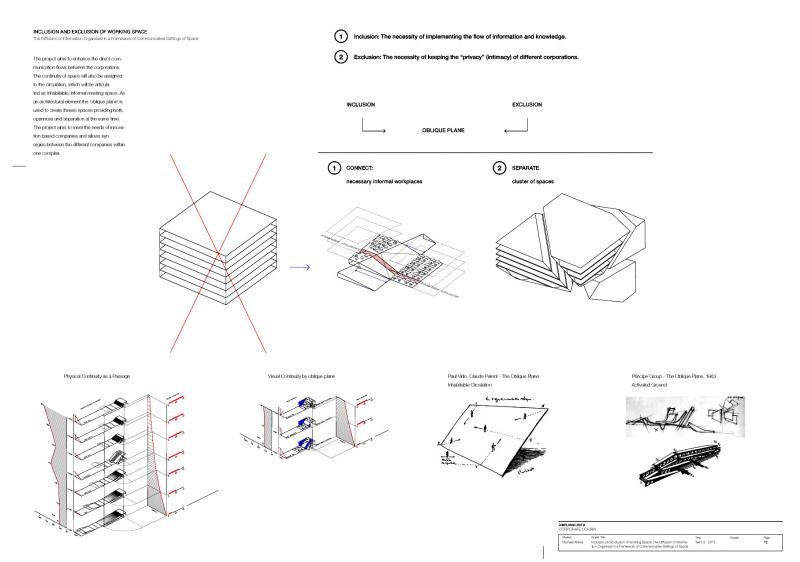
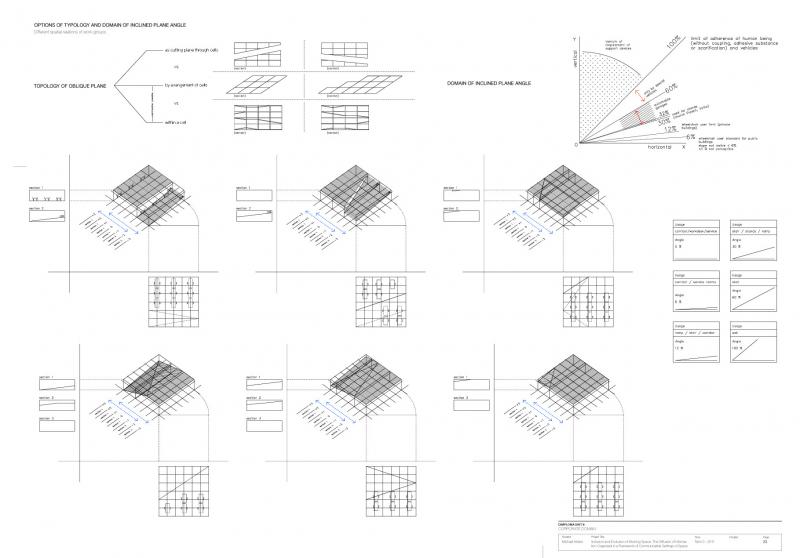
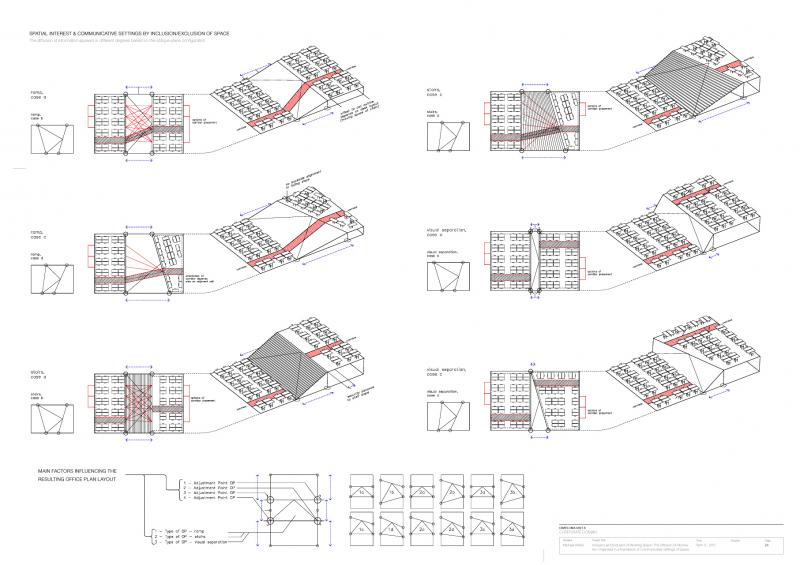
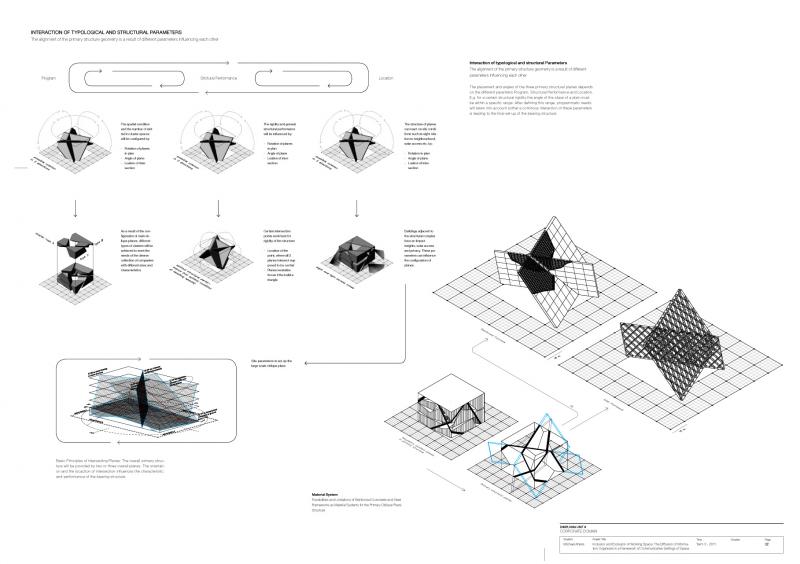
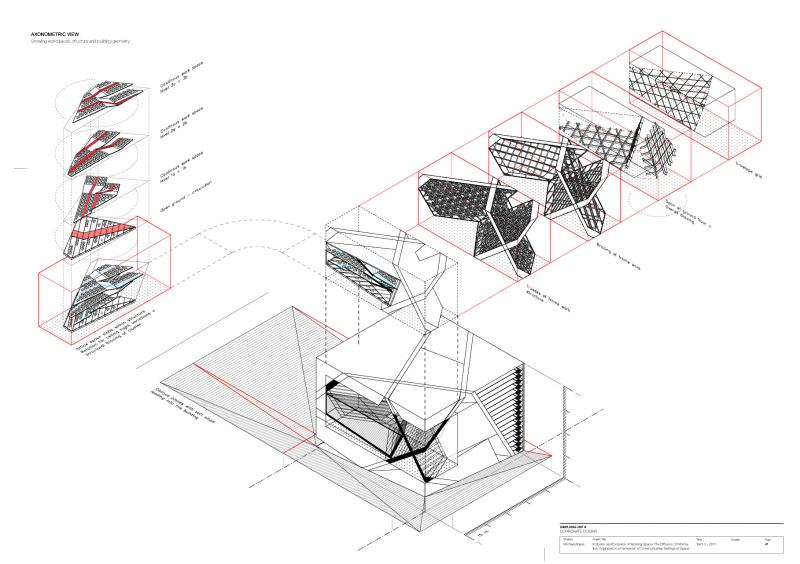
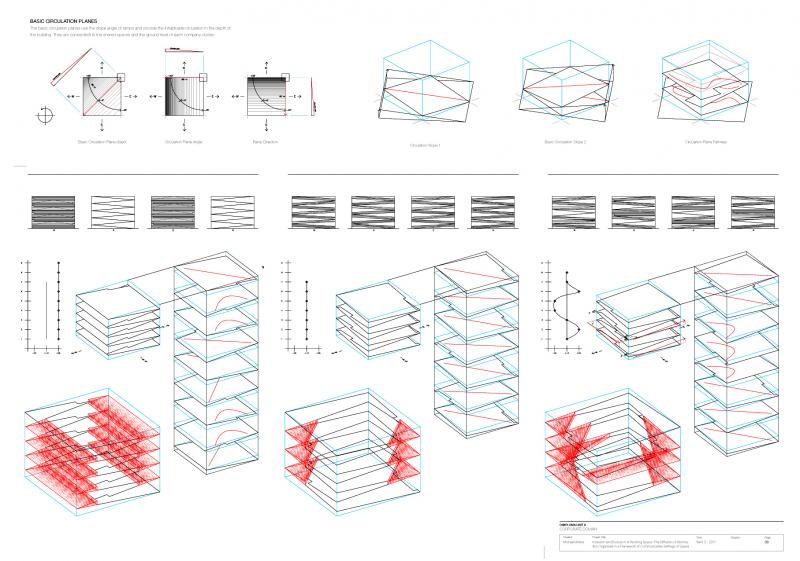
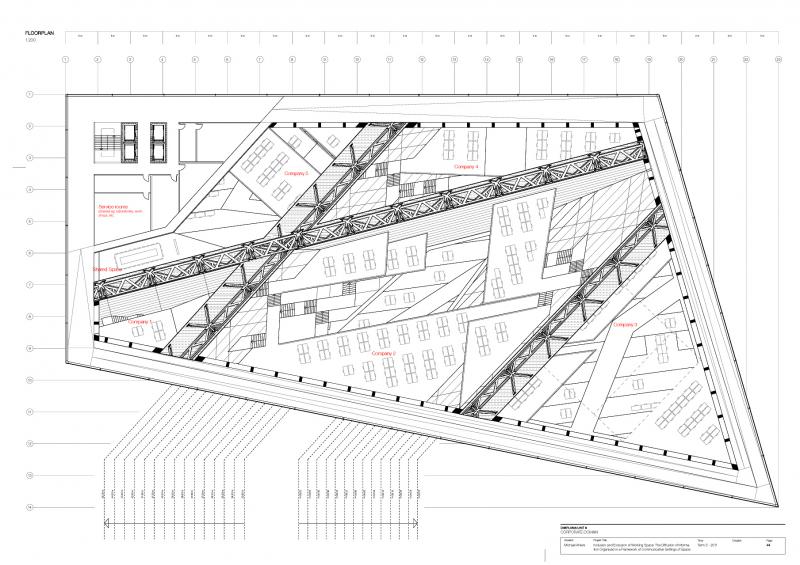
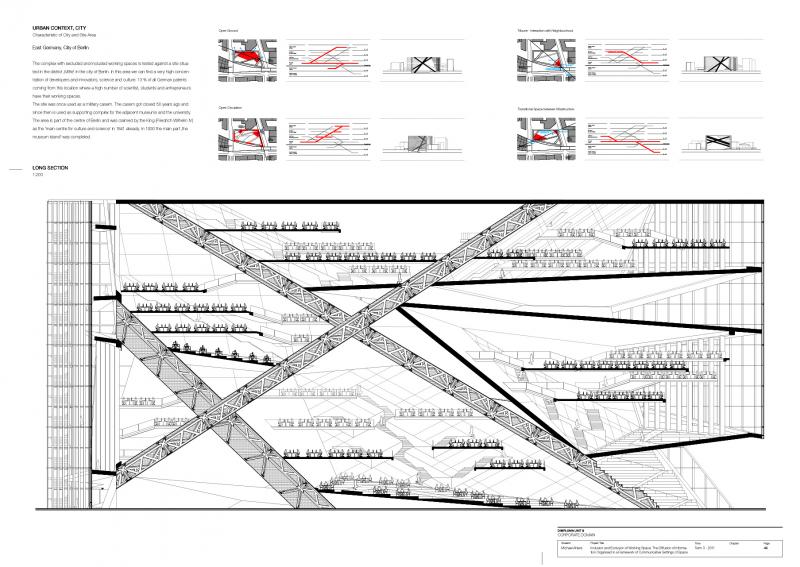
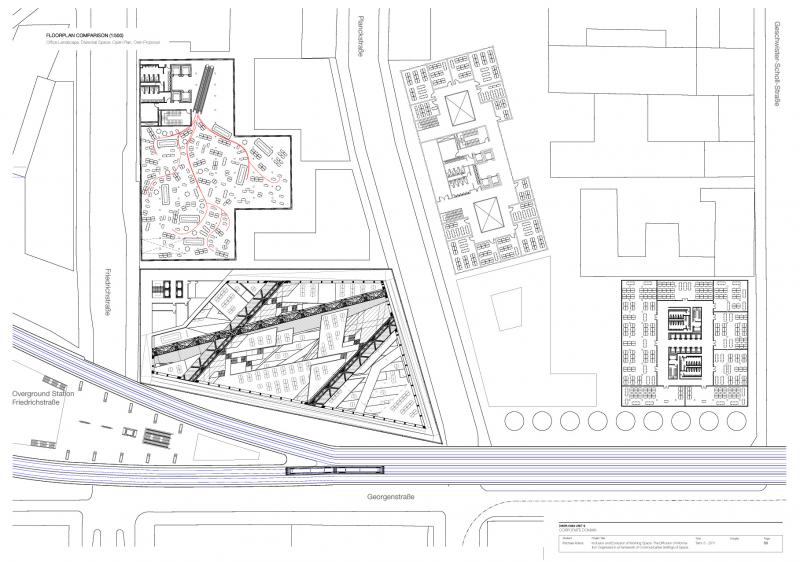
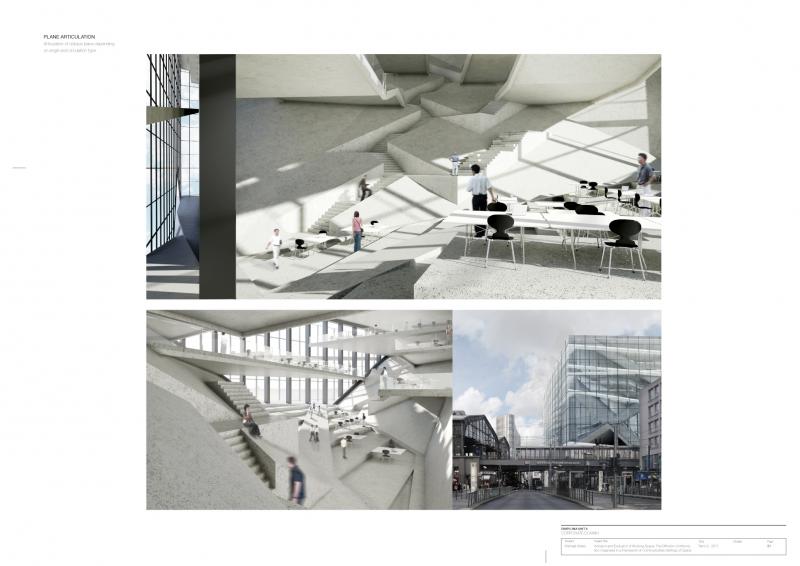
My thesis explores the Inclusion and Exclusion of working space. This relation of inclusion and exclusion of space is used as a method to manage different degrees of flows of information and knowledge; utilizing a framework of communicative settings of space.
The framework allows organizing hierarchically independent types and levels of diffusion in working spaces – within the scale of the office, within the scale of the corporation and within the scale of the city. Various degrees of inclusion and exclusion of working space are produced with the architectural element of the oblique plane.
The characteristic that I want to challenge/emphasize are
1) Inclusion: The necessity of implementing the flow of information and knowledge.
2) Exclusion: The necessity of keeping the “privacy” (intimacy) of different corporations.
With using the oblique plane I refer to Claude Parent and Paul Virilio, who formed the ‘Architecture Principe’ group in 1963. They basically criticised the distinction between room and circulation, wall and floor. Instead they proclaimed the possibilities of communication in space by seeing architecture as an interlocking of inhabitation and circulation, movement and space, private and public. With the aim of investigating this new type of architectural and urban order, they rejected the traditional axes of the horizontal and the vertical and used oblique to achieve this main idea of an inhabitable circulation.